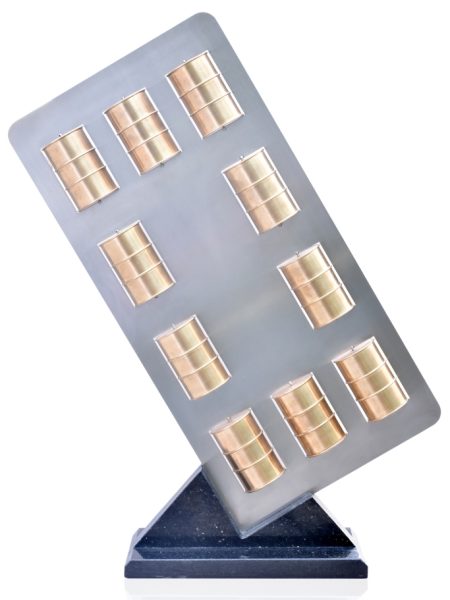
ANTIBIOTIC
Al Suwaidi's latest work exploring whether treating patients and making profits can ever be reconciled is a brilliant, bitter pill to swallow.
A new work by the Emirati artist Jamal Habroush Al Suwaidi explores the complex and at times conflicting roles that antibiotics play by providing crucial treatment for the sick, while delivering huge rewards to the powerful drug manufacturing and pharmaceutical industries.
In this latest, topical work, Al Suwaidi takes as his starting point the notion that though antibiotics are an essential, life-saving component of modern medicine and healthcare for millions they also represent a highly valuable commodity for major industry manufacturers and distributors, often described as Big Pharma.
It was back in 1928 that Alexander Fleming, based at St Mary’s Hospital in London, stumbled across penicillin, the first true antibiotic. The discovery was made when Fleming returned to his lab from vacation and discovered that mold which had developed on an accidentally contaminated staphylococcus culture plate was preventing the growth of the bacteria.
More than 90 years on, penicillin remains the most widely used antibiotic in the world, alongside other powerful drugs that have been found to effectively treat diseases caused by bacteria. However, running parallel to these life-changing scientific innovations, a highly powerful global pharma industry has emerged, with several pharmaceutical corporations routinely securing a position on the Fortune 500 list. The world market for pharmaceuticals stood at USD 1.2 trillion in 2018, according to a Global Use of Medicines report from the IQVIA Institute for Human Data Science, with forecasts suggesting that spending could reach USD 1.5 trillion by 2023.
This theme of whether it’s possible to reconcile meeting patients’ needs with making a huge profit lies at the heart of Al Suwaidi’s creation. To relay his message, the artist has reinterpreted the standardized antibiotic pill, so familiar to many, in a bronze and stainless-steel barrel shape. Set on a marble base, the 10 barrels of life-saving medication somehow appear elevated, at risk of being out of reach, while their black and gold-colored finish give them an association of opulence and wealth, far removed from the lives of the average person for whom antibiotics are essential, rather than luxury items, and could make the difference between life and death. Signed and numbered, Antibiotic is a contemplative work, offering its audience plenty to think about on several levels. The very nature of its theme means it is an elegant and aesthetically pleasing work, but it simultaneously imparts a sense of discomfort and provides a reminder that the pioneering progress made in modern medicine unfortunately doesn’t always trickle down to the most vulnerable and needy.
